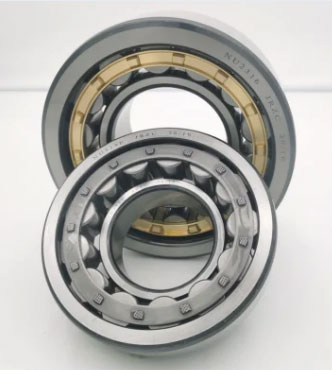Home / News / Spindle Bearing Grease: Selection, Application, and Maintenance
Spindle Bearing Grease: Selection, Application, and Maintenance
Introduction
Spindle bearing grease plays a vital role in the performance, longevity, and reliability of spindle bearings in various types of machinery, such as CNC machines, milling machines, and lathes. Proper lubrication is essential to reduce friction, dissipate heat, and protect the bearings from wear and contamination. This article will discuss the factors to consider when selecting spindle bearing grease, its application, and maintenance practices to ensure optimal bearing performance.

Selection of Spindle Bearing Grease
Base Oil Viscosity
The base oil viscosity should match the operating conditions of the spindle bearings, such as rotational speed, load, and temperature. A higher viscosity grease is more suitable for high load and low-speed applications, while a lower viscosity grease is more appropriate for high-speed applications.
Temperature Range
Choose a grease that can withstand the temperature range experienced by the spindle bearings during operation. High-performance greases with synthetic base oils and specialized additives can perform well under extreme temperature conditions.
Compatibility with Bearing Materials
Ensure that the selected grease is compatible with the bearing materials, such as steel, ceramics, or plastics, to avoid any adverse reactions that may compromise the bearing performance.
Environmental Factors
Consider the operating environment when selecting grease, as factors such as moisture, dust, and chemicals may require specific grease formulations to provide adequate protection and lubrication.
Application of Spindle Bearing Grease
Quantity and Frequency
Apply the appropriate amount of grease based on the bearing size, type, and manufacturer's recommendations. Over-greasing can cause excessive heat generation and churning, while under-greasing may result in insufficient lubrication and premature wear. The frequency of grease application should also be determined based on the operating conditions and manufacturer's guidelines.
Proper Grease Distribution
Ensure that the grease is evenly distributed within the bearing to provide optimal lubrication to all the bearing surfaces and rolling elements.
Cleanliness
Maintain a clean working environment and use clean tools when applying grease to avoid introducing contaminants into the bearings, which can lead to premature wear and failure.
Maintenance of Spindle Bearing Grease
Regular Inspection
Perform regular inspections of the spindle bearings to assess the condition of the grease and identify any signs of excessive wear, contamination, or leakage.
Grease Analysis
Periodic grease analysis can provide valuable information about the condition of the grease, bearing wear, and potential contaminants. This information can be used to optimize the lubrication and maintenance schedule, extending the service life of the spindle bearings.
Proper Storage and Handling
Store grease in a clean, cool, and dry environment, and follow the manufacturer's guidelines for shelf life to ensure the grease remains effective. When handling grease, use clean tools and containers to avoid contamination.
Conclusion
Spindle bearing grease is crucial for the optimal performance and longevity of spindle bearings in various types of machinery. By considering factors such as base oil viscosity, temperature range, material compatibility, and environmental factors, the right grease can be selected for a specific application. Proper application and maintenance practices, including regular inspection, grease analysis, and clean storage and handling, will help ensure the spindle bearings remain well-lubricated and protected, resulting in improved reliability and extended service life.
- Previous: Precision Spindle Bearings: Types, Features, and Applications
- Next: Spindle Bearing Preload Adjustment: Importance, Methods, and Best Practices











